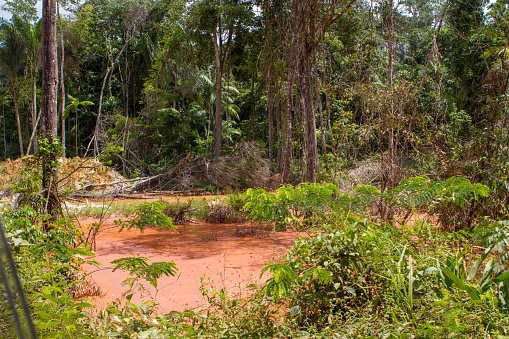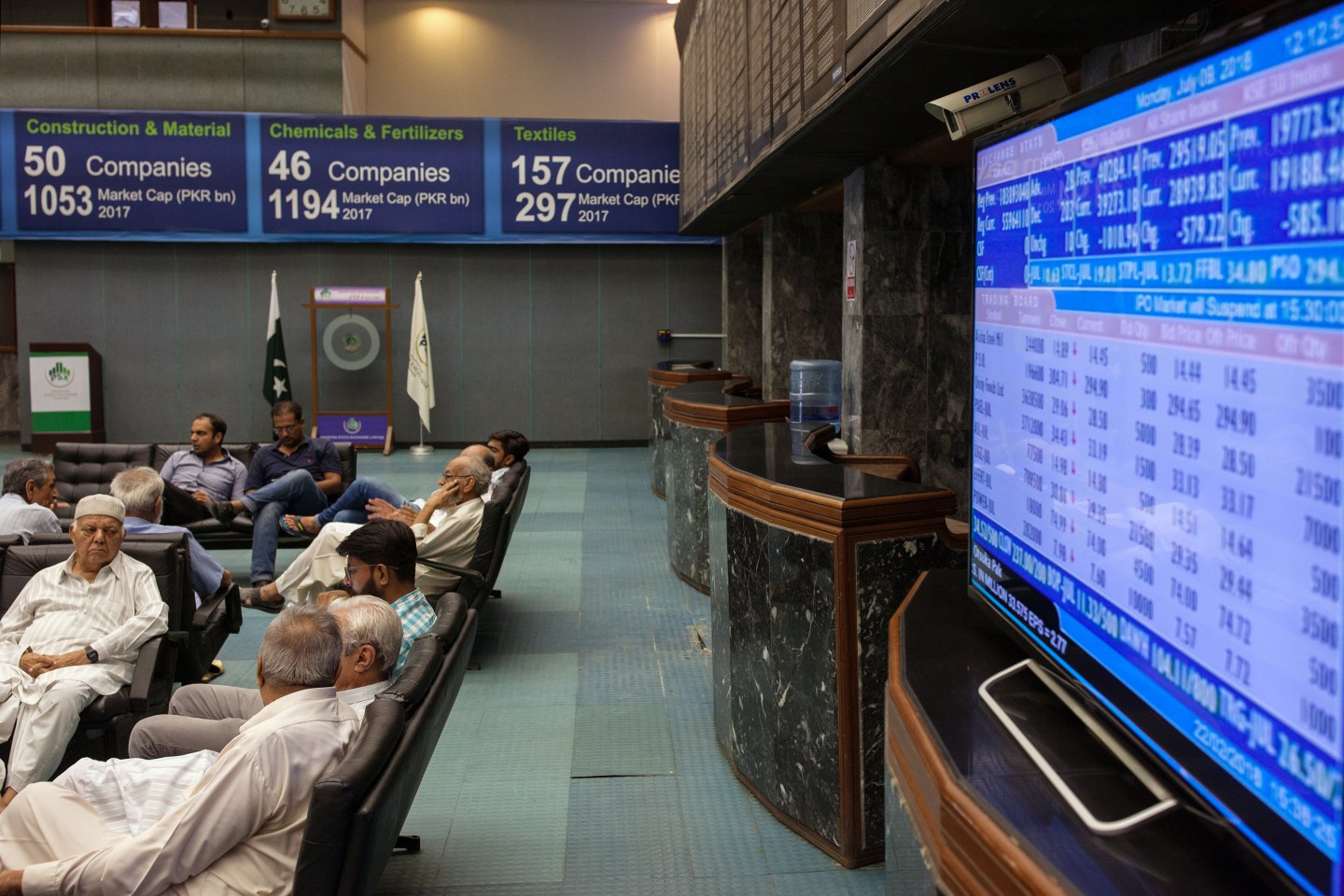Peru's Mining Restrictions: Economic Consequences And Gold Production Decline

Table of Contents
The Impact of New Mining Regulations on Gold Production in Peru
The recent tightening of mining regulations in Peru has had a measurable impact on gold production. These restrictions, while intending to protect the environment and local communities, have created significant hurdles for mining operations.
Increased Bureaucracy and Permitting Delays
Navigating the Peruvian regulatory landscape for mining projects has become increasingly complex and time-consuming.
- Lengthy Permitting Process: The process of obtaining necessary permits has lengthened considerably, often involving multiple agencies and extensive bureaucratic procedures.
- Increased Costs: The added complexity translates into significantly higher costs for mining companies, impacting profitability and potentially leading to project cancellations.
- Project Delays: These delays hinder the initiation and expansion of mining projects, directly affecting overall gold production and impacting the timeline of new gold mine development.
- Stricter Environmental Impact Assessments: More stringent environmental impact assessments (EIAs) are required, demanding extensive data collection and analysis, further contributing to the delays. For example, the new regulations regarding water usage and waste management have added significant complexity to the permitting process.
Limitations on Mining Activities in Protected Areas
Restrictions on mining near environmentally sensitive areas, including national parks and protected forests, have significantly limited potential exploration and development.
- Restricted Access to Deposits: Many potentially lucrative gold deposits are located near or within environmentally protected areas, making their exploitation legally challenging or impossible.
- Lost Revenue and Employment: This restriction translates into a loss of potential revenue for the government and the private sector, as well as a loss of potential employment opportunities in affected regions.
- Case Studies: Several projects in the Amazon rainforest and the Andes mountains have been directly impacted by these limitations, demonstrating the real-world consequences of these restrictions on Peruvian gold production. The Las Bambas copper mine, though not solely a gold mine, offers a prime example of the challenges posed by proximity to protected areas.
Community Conflicts and Social Licensing Challenges
Securing a "social license to operate" – the acceptance of a mining project by local communities – has become increasingly critical, yet challenging.
- Indigenous Community Concerns: Indigenous communities often voice significant concerns regarding the environmental and social impacts of mining operations, leading to conflicts and protests.
- Project Delays and Cancellations: These conflicts can result in project delays, increased costs associated with conflict resolution, and even outright project cancellations, all negatively impacting Peru's gold production.
- Importance of Social License: Obtaining a social license is no longer optional; it’s essential for the successful operation of any mining project in Peru.
- Conflict Mitigation Strategies: Companies must proactively engage with local communities, address their concerns, and develop strategies for mitigating potential negative impacts. Transparency and meaningful consultation are vital.
Economic Consequences of Reduced Gold Production
The decline in gold production due to these restrictions has far-reaching economic consequences for Peru.
Impact on GDP and Foreign Investment
Gold mining is a significant contributor to Peru's GDP. The reduction in gold output directly impacts the country's overall economic performance.
- Reduced GDP Growth: The decrease in gold production translates into a lower GDP growth rate, affecting overall economic prosperity.
- Decline in Foreign Direct Investment (FDI): Uncertainty surrounding mining regulations can deter foreign investors, reducing vital capital inflow into the sector.
- Ripple Effects: The slowdown in the mining sector also negatively impacts related industries, such as transportation, logistics, and manufacturing.
- Statistical Data: Data from Peru's central bank and mining ministries can illustrate the quantifiable economic impact of reduced gold production.
Job Losses and Unemployment
Reduced mining activity inevitably leads to job losses, impacting both directly employed workers and those in related sectors.
- Direct Job Losses: Thousands of jobs in mines and processing plants are directly affected by decreased production or project cancellations.
- Indirect Job Losses: The knock-on effect extends to supporting industries, leading to further job losses in transportation, services, and other related areas.
- Regional Economic Impacts: Regions heavily reliant on mining face particularly severe consequences, potentially leading to social unrest and instability.
- Unemployment Rise: The resulting increase in unemployment can strain social welfare systems and exacerbate existing inequalities.
Decreased Government Revenue
The reduction in gold production leads to a significant decline in government revenue derived from mining royalties and taxes.
- Reduced Tax Revenue: Lower production directly impacts government income from mining taxation, affecting public spending.
- Impact on Social Programs: This decreased revenue can force cuts in government spending on vital social programs like education, healthcare, and infrastructure.
- Need for Diversification: Peru needs to diversify its revenue streams to lessen its dependence on the mining sector and mitigate the risk of economic instability.
Balancing Environmental Protection and Economic Growth in Peru's Mining Sector
Finding a sustainable balance between environmental protection and economic growth is crucial for Peru's future.
Sustainable Mining Practices and Responsible Investment
Adopting environmentally responsible mining techniques is paramount to ensure long-term sustainability and attract responsible investors.
- Environmentally Responsible Mining: Implementing best practices in waste management, water usage, and land reclamation is crucial for minimizing environmental damage.
- International Standards and Certifications: Adherence to international standards and certifications (e.g., ISO 14001) can help build investor confidence and demonstrate a commitment to sustainability.
- Attracting Responsible Investors: Companies committed to both profit and environmental protection are vital for the future of Peru's mining industry.
- Successful Sustainable Mining Projects: showcasing examples of successful sustainable mining projects both in Peru and internationally can help demonstrate the feasibility and benefits of this approach.
Strengthening Regulatory Frameworks and Transparency
Improving the efficiency and transparency of Peru’s mining regulatory framework is essential for attracting investment and fostering sustainable growth.
- Efficient Permitting Process: Streamlining the permitting process while maintaining high environmental standards will reduce delays and costs.
- Transparent Regulations: Clear, accessible, and predictable regulations are crucial for investor confidence.
- Collaboration and Stakeholder Engagement: Open communication and collaboration between the government, mining companies, and local communities are essential for building consensus and trust.
- Enhancing Stakeholder Engagement: Meaningful consultation with all stakeholders is essential for finding solutions that address both environmental and economic concerns.
Conclusion:
Peru's tightening mining restrictions, while aiming for environmental protection and addressing social concerns, are having significant economic consequences, notably impacting gold production. The resulting decrease in GDP, foreign investment, and government revenue presents considerable challenges. To navigate this complex situation, Peru needs to adopt a balanced approach focusing on sustainable mining practices, transparent regulations, and improved community engagement. Finding a way to harmonize environmental protection with economic growth is crucial for the future of Peru's gold mining industry and overall economic prosperity. Further analysis of Peru's mining restrictions is needed to create effective, sustainable policies for the future, ensuring a more balanced approach to gold mining and environmental protection. Careful consideration of the impact of Peru's mining restrictions on the future of the industry is essential for developing sustainable solutions.

Featured Posts
-
 Post Trade Deadline Nhl Power Rankings 2025 Playoff Projections
May 10, 2025
Post Trade Deadline Nhl Power Rankings 2025 Playoff Projections
May 10, 2025 -
 Investing In Palantir In 2024 A 40 Growth Potential By 2025
May 10, 2025
Investing In Palantir In 2024 A 40 Growth Potential By 2025
May 10, 2025 -
 Njwm Krt Alqdm Almdkhnwn Hqayq Sadmt En Eadathm Aldart
May 10, 2025
Njwm Krt Alqdm Almdkhnwn Hqayq Sadmt En Eadathm Aldart
May 10, 2025 -
 Growing Tensions Cause Pakistan Stock Exchange Portal Outage
May 10, 2025
Growing Tensions Cause Pakistan Stock Exchange Portal Outage
May 10, 2025 -
 Infineons Ifx Q Quarter Earnings Tariff Uncertainty Impacts Sales Outlook
May 10, 2025
Infineons Ifx Q Quarter Earnings Tariff Uncertainty Impacts Sales Outlook
May 10, 2025
